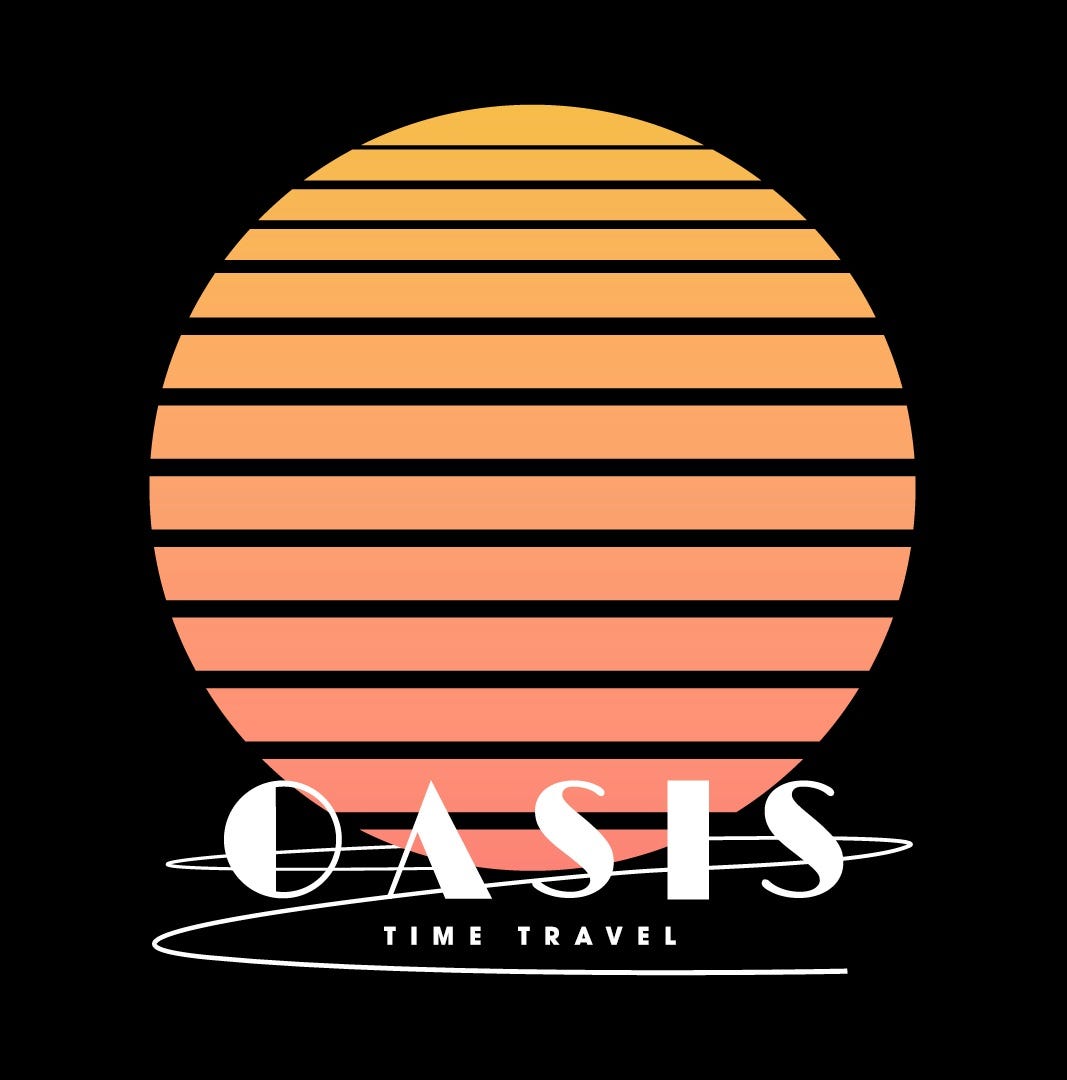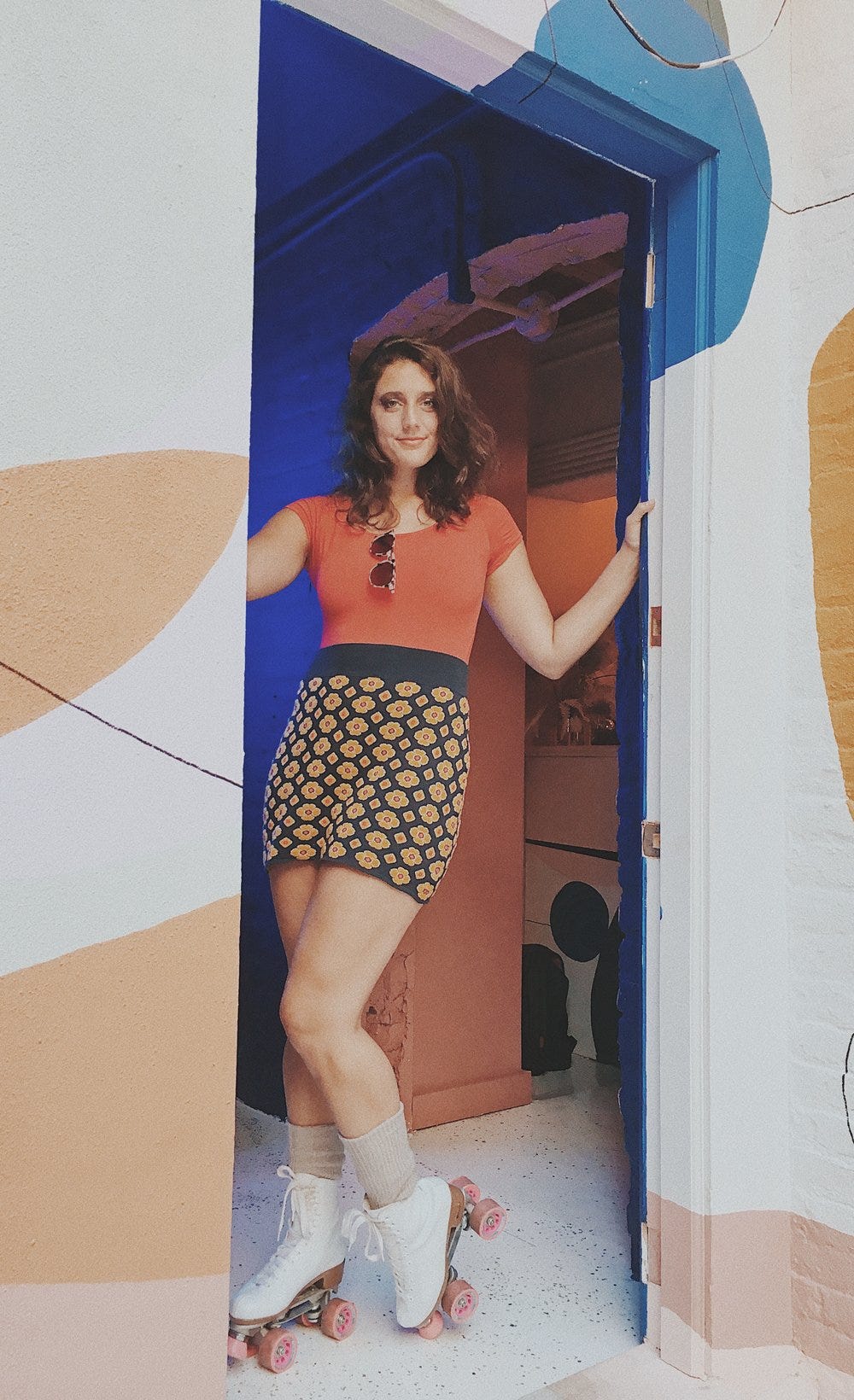‘Oasis Time Travel’ Turns the Line Between Party and Theatre into Its Own Medium (Review)
Silver Dream Projects takes you to the disco past from the future present in their new transmedia project


For the first twenty minutes or so of nothing happening, I wonder if I’m just at some party in a down home club in Bushwick. Once the show kicks into gear, however, it’s clear Oasis Time Travel is definitely a show. And also a party. Silver Dream Projects’ latest piece takes that imaginary line between party and immersive theatre and dances all over that poor little line until it begs for mercy.
Andrew Wehnke’s Silver Dream Projects has been creating narratives through transmedia story projects, ARGs, and immersive theatre projects for quite some time now. They’re working to populate social media with the glitterati children of Warhol and Derrida.
Going to one of their events feels as if Instagram has opened up like a magic wardrobe, pulling you into a world where every super-saturated filter is real. Their projects put audience members in an intersectional land of dance, acceptance, and rhizomatic art. That’s the sort of vibe Silver Dream Projects throws, and ‘Oasis Time Travel’ vibes hard.
I show up at 3 Dollar Bill, around the corner from the Montrose L stop, late on a rainy Sunday night, where I’m welcomed by a woman in a brown trench coat who asks if I’ve been followed. She’s especially wary of businessmen and guys in suits. Who isn’t? She turns out to be one of the Time Travel Agents for Oasis. She wraps up her intro for the space with a long, narrative riddle that has me pretty lost. Luckily someone else in line comes up with the answer, because that very answer would save us later that night, when the past got dicey and time stood still.
3 Dollar Bill is a charming venue with a big, L-shaped bar and a comfortable dance floor hiding on the other side of a couple doorways. We start in the bar listening to songs sung by Wei Wei, a musician from the future. Then Mae Davis, the CEO of the all female owned and operated Oasis Time Travel (also in a brown trench coat) brings us into the world of the show. As it turns out, we aren’t in the present, we’re in the future. Mae doesn’t make this explicit, she just talks to us as if we all know we’re more than halfway through the 21st century, and the past is further away than we imagine.
The roles of Mae Davis and all the Time Travel Agents are performed by members of Silver Dream Projects with a wonderfully welcoming enthusiasm, tinged with the barest hint of irony. Before our time machines activate, Mae asks her Time Travel Agents, all wearing brown trench coats, to say goodbye to whatever it is that pains them about the present future. One calls out: “Goodbye to looking at someone and not knowing if they’re looking at me or looking at the screens in their eyes,” calling up a future technology that expresses a feeling of the present. Goodbye, it seems, to a future that could only be fixed in capitalist realism, of our current felt present turning into an absolute forever.
Everybody gets their own time machine, and it’s not what you might expect. The time machines themselves may seem almost comically low-fi at first, but they share a great deal with innovative time-travel stories like Grant Morrison’s The Invisibles or Terry Gilliam’s 12 Monkeys more than they do with H.G. Wells. Once everyone has their own time machine, the Time Travel Agents guide us through the to the dark dance floor, where the time machines engage, the disco ball is lit, and the trench coats come off to reveal extreme 70’s finery.

A bunch of new 70’s characters appear. The place feels more like a party than ever. Roller skates, bell-bottoms, and enormous sunglasses all make appearances as the dance floor fills with performers and participants alike. Shrewd pacing comes into play here: as soon as it feels like we were “just” at a party, new character would arrive or a choreographed bit would begin or a Time Travel Agent would gather up a small group of audience members for a side-scene.
At one point, it seemed as if the Time Travel Agents and 70’s characters were dancing solo. But then they began to slowly come together into an elaborately choreographed routine that then melt back into a fluid dance floor, until we realized that the Time Travel Agents had all frozen. Just the time travel agents. The rest of us, and the 70’s characters, kept moving under the disco beat. As soon as we realized what was happening, a new character showed up. Gender fluid and wrapped in silver, they looked a bit like Grant Morrison as a cyber fairy godmother. The character seemed to attempt to make contact — “It’s a rescue mission.” It was unclear if the fear from the Time Travel Agents had do to with being taken back to the future, or being stuck in the present. Were they looking to escape forever or return? Or did it turn out that neither the present nor the past nor the future were an escape from all of those things the Time Travel Agents wanted to say goodbye to. Soon the cyber fairy godmother disappeared, and that sequence then peeled off into more little narratives here and there around the space.
While themes elaborated and evolved in a fun, engaging, and occasionally moving way, the story never really cohered, but coherence didn’t seem like the point. The character of each Time Travel Agent seemed more essential, and what they had gone through in the past was more important to the experience. Some forgot themselves completely, some found themselves addicted to atavistic drugs, and some seemed only to want to dance forever.
What could have helped with Oasis Time Travel might have been a clearer role for the audience. We were clearly a part of the party, but if we had been given a specific objective, it might have revealed an easier path through the evening, even if that goal was only to observe. For the truly extroverted, the environment of Oasis Time Travel was probably fantastic, but for the rest of the population, an action or a role might have been helpful. Clear roles might help and audience us engage with the core questions the show asks: “What were we looking for, in the past?” “What were we escaping from, in the future?”” What did we have to do while in the 70’s, and what might be lost if we didn’t get back to the future?”
I hope Silver Dream Projects continues to evolve, and bring their canny approach and transmedia antics to every platform they can get their hands on. If anyone can turn Instagram into a magic wardrobe, it’s Silver Dream Projects and their endlessly enthusiastic Time Travel Agents.
Oasis Time Travel returns November 19–21 and December 10–13 through December 15. Tickets are $25–70.
NoPro is a labor of love made possible by our generous Patreon backers. Join them today!
In addition to the No Proscenium web site, our podcast, and our newsletters, you can find NoPro on Twitter, Facebook, YouTube, Instagram, in the Facebook community Everything Immersive, and on our Slack forum.
Office facilities provided by Thymele Arts, in Los Angeles, CA.